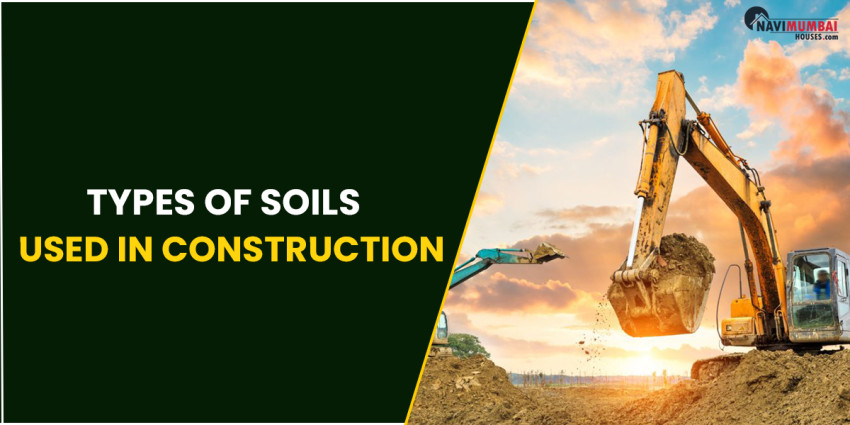
For stability during building, soil must have a strong physical structure.
Choosing the right soil for your construction projects is crucial since it has a big impact on how well they come out. Some soil types are better suited for construction than others. You must be attentive while planning your foundation if you don't want a building with a weak base.
It may be quite devastating to use the wrong sort of soil for your foundation or superstructure. It might cause the building's foundation to deteriorate, sink, form cracks, or, worst of all, collapse. It cannot be emphasized enough.
Soil types: characteristics of a quality building soil
The following are some qualities of soil that make it ideal for your project's construction:
• Both during the dry and wet seasons, it must be stable.
• It needs to be physically stable throughout construction and have a strong framework.
• Any kind of structure needs a balanced chemistry in order to be built on good soil.
• Rainwater should be allowed to stay in the soil, preventing erosion and flow.
Sand
It is the building material that is most often utilised. Rock fragments and hard minerals like silicon dioxide make up its composition. Each one of them can be seen with the unaided eye and they are the largest type of soil particles. The large, usually constant sand particle size boosts soil aeration, tilts the soil, and facilitates drainage in compacted soils.
The particle sizes of fine, medium, and coarse sands range from 0.075 to 0.425 mm, 0.425 to 2 mm, and 2 to 4.75 mm respectively. Sand that is wet or dry may be rubbed between your fingers to feel gritty because of the bigger particles. When you try to clump the soil with your hand, it also becomes light and crumbly. Sub-angular, angular, flat, rounded, or elongated particles can all be formed. Its texture might be rough, slick, or polished.
Advantages of sand
• Suitable for construction because it supports heavy loads
• It provides good drainage
• Contains neither organic nor impure substances
Silt
Silt is a geological substance that falls between the sizes of sand and clay. When transported by floodwaters, it makes a productive deposit on the valley floor. Silt consists of 0.002 to 0.06 mm-sized particles. Silt is a non-plastic or low elastoplastic substance because of its fineness. Due to the size of its particles, silt soil becomes smooth when wet, making it simple to form into balls or other forms. Extremely moist silt soil readily combines with water to form fine, runny mud puddles.
Advantages of silt
• Fertile ground
• Greater capacity to hold water
• Easy to work with as compared to other soils
Clay
Clay particles, which have a size of less than 0.002 mm, are the tiniest soil particles. It is composed of tiny, sub-microscopic rock particles that have undergone chemical degradation. Clay is cohesive dirt made up of small granules. When dry or wet, they easily stick to one another, taking on a sticky or glue-like texture.
Due to the gaps between clay particles, which make up more than 25% of clay, clay soils retain a lot of water. When exposed to moisture, clay expands and shrinks. Contrary to sand particles, which are typically rounded, clay particles are thin, flat, and covered in tiny plates. Because organic clay is highly compressible and extremely strong when dry, it is used in construction projects as mud mortar.
Advantages of clay
• Ideal substance for tropical climates
• Clay bricks that last add value and style
• The properties of insulation reduce energy costs
Loam
The qualities of these three distinct textures, when combined to make loam, are advantageous for drainage, fertility, air circulation, and moisture retention. These soils are easy to deal with, rich, and have adequate drainage. Depending on what makes up the majority of their makeup, they can either be sandy or clay loam.
The loam is a product of the interactions between the other soil elements. The soil categories indicated before 'loam' are stated in the order in which its component particles are most common in the loam, for example, a soil that includes 30% clay, 50% sand, and 20% silt is a sandy clay loam. Soils that primarily include these components are referred to as "clay loams," "silt loams," and "sand loams."
Advantages of loam
• Construction-friendly because it holds water at a balanced rate
• Controls air humidity if applied as a layer to interior walls
• Ideally combined with straw to build walls
Different types of soil have various physical and chemical properties and each plays a particular role in construction. Before utilising any specific soil, whether for building or agricultural, you must first ascertain the type of soil in the region or on the construction site.
Source From:- navimumbaihouses






